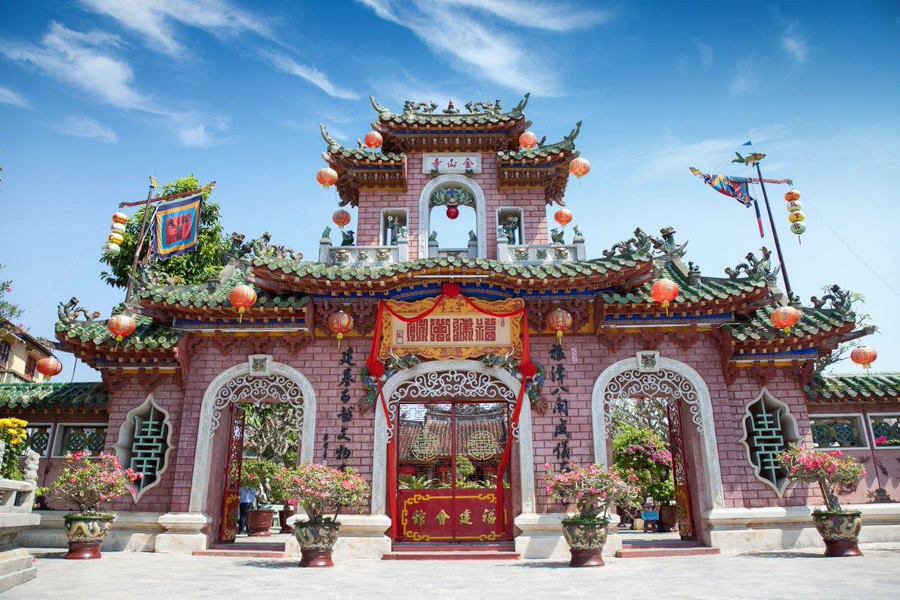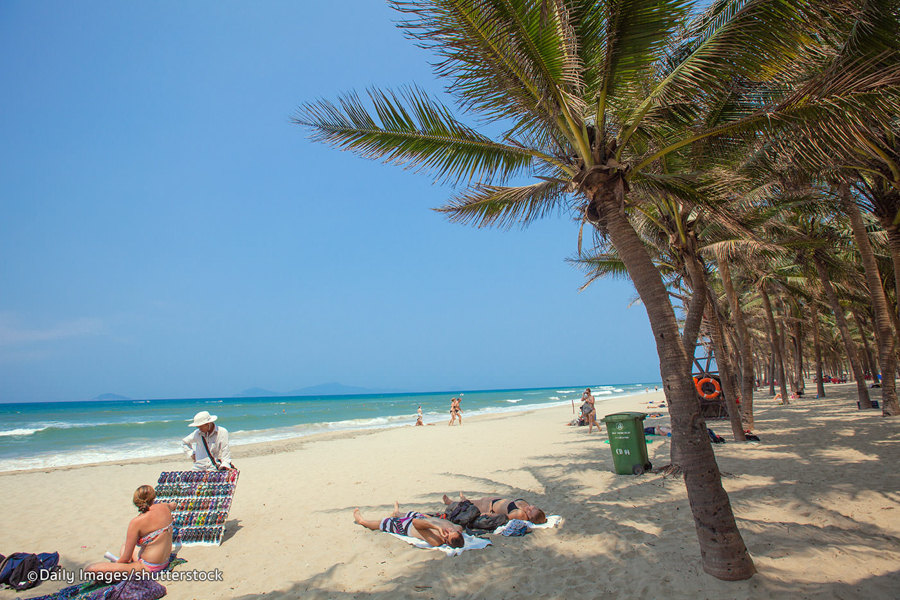Hoi An Travel Guideline: Amazing things to do and attractions

Updated on 05 Oct 2024
Situated 30 km to the south of Danang, Hoi An is a lovely small town near the coast of Central Vietnam.
Although Hoi An, Vietnam nowadays is more of a tourist spot, but in the Middle Ages, the place used to be one of the key ports in maritime trade across Asia. Now that the glory and wealth have passed, leaving Hoi An with ranges of yellowish houses with brown roof along the Hoai river.
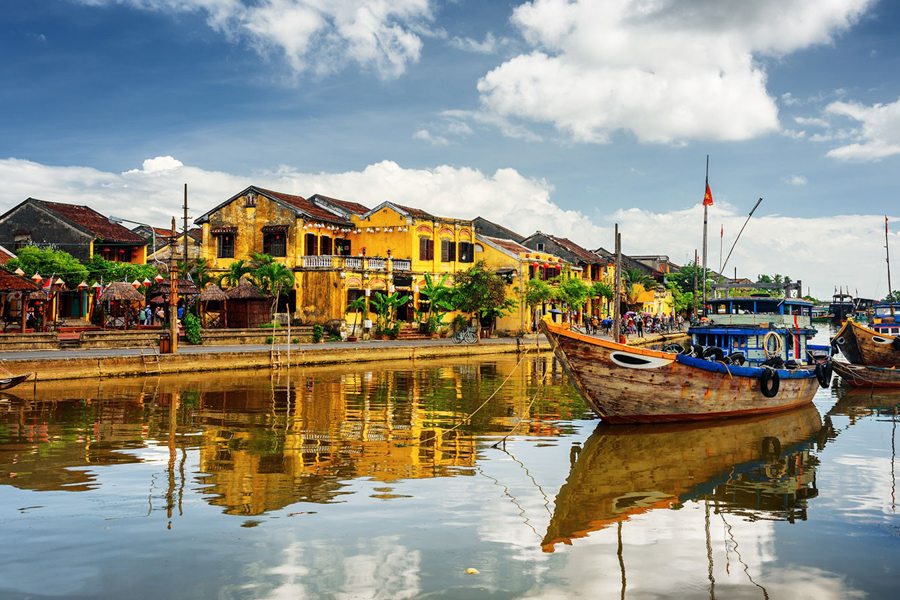
The shades of colors covering most of the ancient town may seem simple and unsophisticated. However, the colors reflect the dweller's culture and spirit: Strong, simple but elegant.
Before exploring Hoi An, it would be important to note down some attractions and things to do in Hoi An you shouldn’t miss during your trip. To help you experience the fullest of Hoi An, we would like to list out several recommendations.
Things to do and attractions in Hoi An in a nutshell.
Things to do in Hoi An
-
Wandering around Hoi An
-
Joining Hoi An Cycling tour
-
Tasting food in Hoi An
-
Sitting on a Boat on Hoai River in Hoi An
-
Becoming a farmer in Tra Que Vegetable Village
-
Enjoying Hoi An Lantern Festival
-
Watching Hoi An Memories Scenery Show
II. Attractions in Hoi An
-
Hoi An Ancient Houses
-
Chinese Assembly Halls
-
Hoi An Market
-
Hoi An Handicraft Studio
-
Hoi An Japanese Bridge
-
Hoi An Museum of History and Culture
-
Beaches in Hoi An
-
Nearby villages
1. Things to do in Hoi An
1.1. Wandering around Hoi An
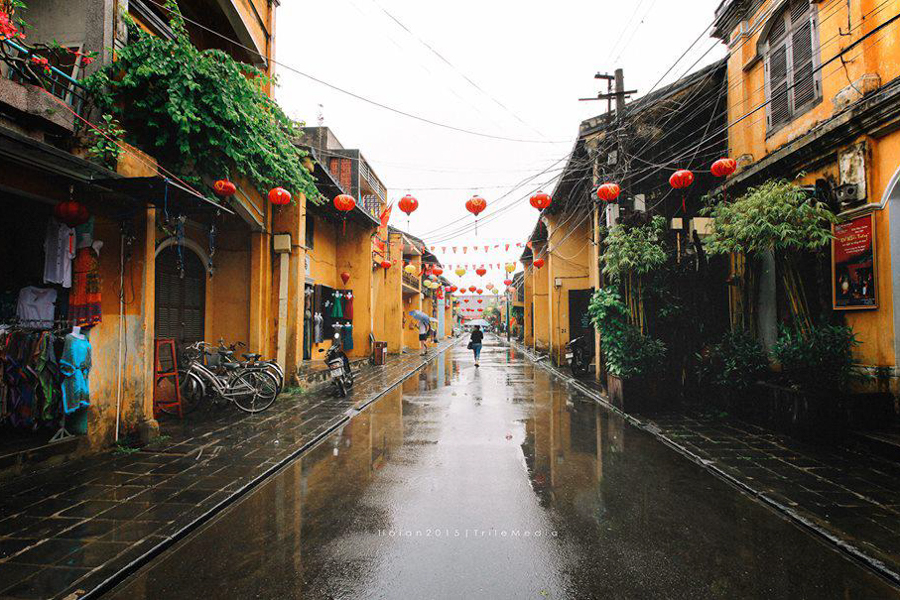
What is more interesting than a walk around the dream-like town of Hoi An? As the town has so many different and fascinating places, walking would guarantee that you are not going to miss anything. As you walk, you can feel the slow but vibrant life of Hoi An. Also, it would be more convenient since you can easily take a photo if you spot something interesting.
1.2. Joining Hoi An Cycling Tour
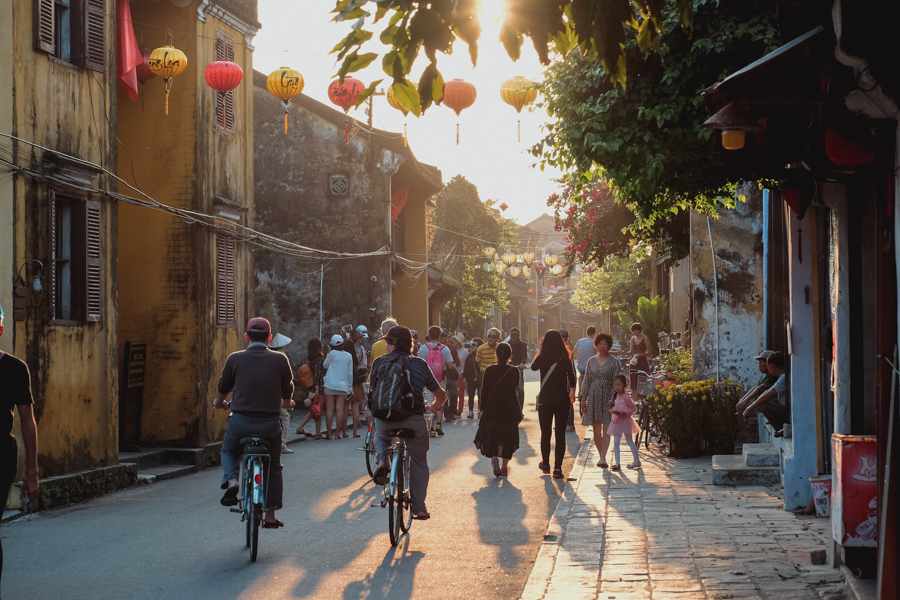
Although walking is good, it can be very tiring. In this case, hire a bicycle and ride past the streets would be also a good choice. Many accommodations in the area offer bicycles for rent at just about 40,000 VND per day. Some places even let you use them for free. However, if you stop by to visit a place or to eat, remember to watch out for your bike. If you need an English-speaking tour guide riding with you, we A21 Tour is operating a tour like that. You can see more here.
Bike-lifter can easily steal out-of-sight bikes. Another choice is taking part in a cyclo tour. Cyclo is some kind of bicycle-modified transport that is very popular in Vietnam. You pay for the cyclo driver to ride you along narrow but beautiful streets of Hoi An. The price is not cheap at all with the price of 150,000 VND but the experience is worth it.
1.3. Tasting Food in Hoi An
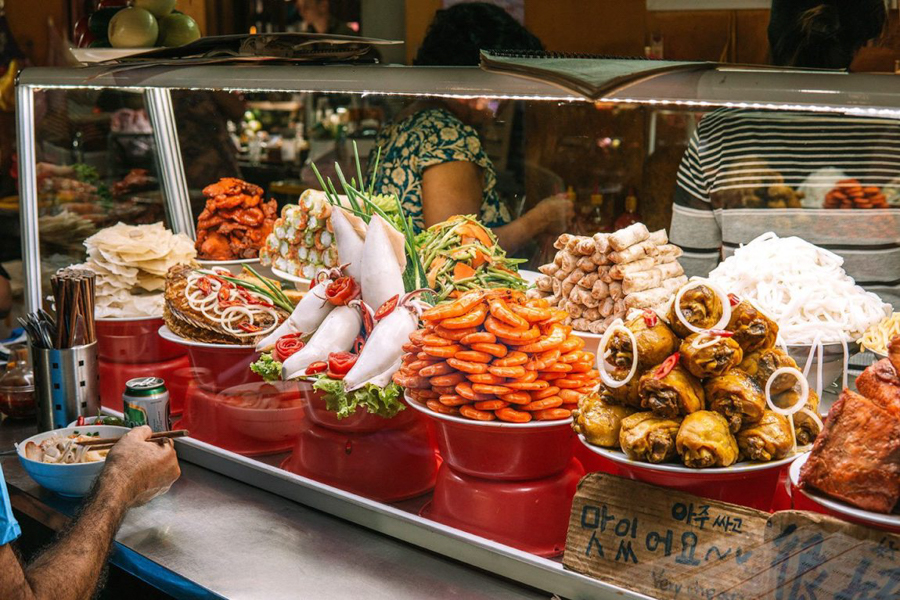
A trip to Hoi An would not be complete without the food. Hoi An is famous for its food. Street vendors and restaurants are everywhere in the town.
Some iconic street food restaurants of Hoi An are Banh Mi Phuong and Com Ga Ba Bui ( Madam Bui’s chicken rice). Desserts and drinks such as coffee and ice tea are also very popular and cheap, usually from 10,000 - 30,000 VND.
1.4. Sitting on a Boat on Hoai River

Besides walking, cycling, and kicking back in a cyclo, boating is also a good way to explore Hoi An. In the past, Hoi An was a seaport, thus getting around using boats was very popular.
As you observe the Hoai river, you can admire Hoi An ancient town with its old houses on the river bank. Try this in the evening, when Hoi An lights up with its characteristic yellow glow from the locally-made lanterns.
On the full-moon day, join the local to release flower garlands and colored lanterns on Hoai river. The price for each boat trip is quite reasonable, about 50,000 – 100,000 VND.
1.5. Becoming a farmer in Tra Que Vegetable Village
Have you ever worked as a farmer in Vietnam before? If no, then this would be one of your most unforgettable experience for sure! Forget about machines and complicated tools.
In Tra Que, people use the traditional way of cultivation that has been around for ages. Therefore, you will have the chance to plant the trees, sow the seeds, water the vegetables and so on. The experience may be difficult but it will be also very interesting.
1.6. Enjoying Hoi An Lantern Festival

There is a lantern festival in Hoi An ancient town every day 14th of the lunar calendar. All of the electric lights will be turned off and instead, beautiful colored lanterns will be hung up. The festival usually starts at 6 PM and goes until 9 or 10 PM. Get around for sightseeing or even release the flower garlands and colored lanterns on Hoai river. The highlight of the festival would be the Japanese bridge where a lot of locals and tourists gather and talk.
1.7. Watching Hoi An Memories Scenery Show

Hoi An Memories Scenery Show is spectacular with hundreds of actors demonstrating the history and culture of this land. Watching the show, you can see the establishment of Hoi An and the local Champa wedding. Also, you could understand more about the lifestyle of residents in Hoi An and Hoi An of today's world. The ticket price is very high (540,000 VND – 950,000 VND for an adult. The price depends on the type of seat that you choose. But due to the reputation of the show, the tickets usually run out quickly. Therefore, if you want to enjoy the show, be quick!
2. Attractions in Hoi An
2.1. Hoi An Ancient Houses:
2.1.1. Tan Ky Ancient House
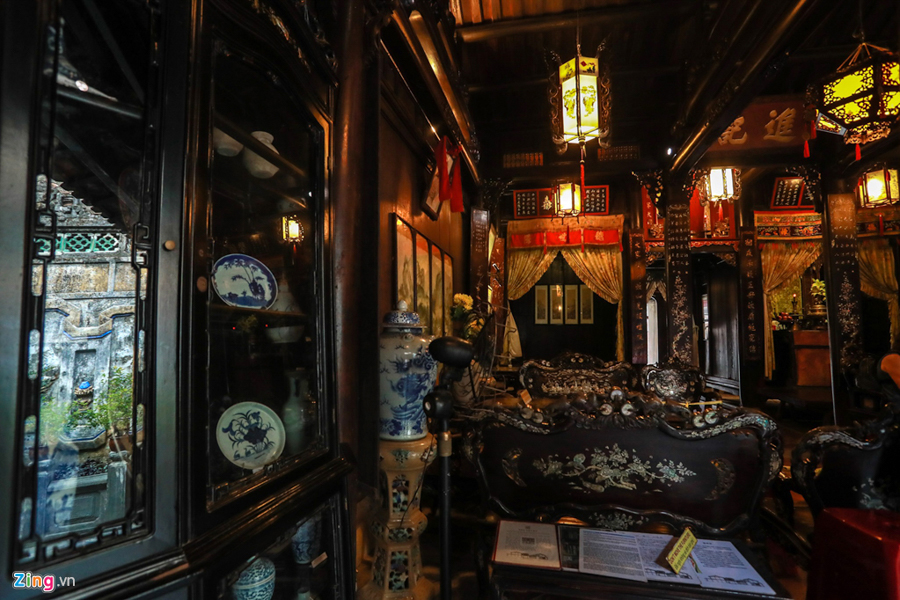
Built in the late 18 century, Tan Ky ancient House is one of the oldest traditional houses in Hoi An with 200 years of history. Despite the ups and downs of time, it still preserves much of its original architecture, the unique style popular in Hoi An hundreds of years ago. This house used to belong to the Le family, one of the wealthiest in the town. The house was designed with many small rooms so that the owners could use it for different purposes. The front side of the house was used for business while the rooms on the back were utilised for storage. The uniqueness of Tan Ky Ancient House lies at the combination of Chinese-Japanese-Vietnamese elements into its construction. The decoration of the house, which mostly reflects the influence of Eastern philosophy, is also very sophisticated and lavish thanks to skillful hands of carpenters in the region. Therefore, Tan Ky Ancient House was proudly acknowledged as one of Vietnam’s national heritages. It also welcomes thousands of visitors every year.
2.1.2. Phung Hung Ancient House
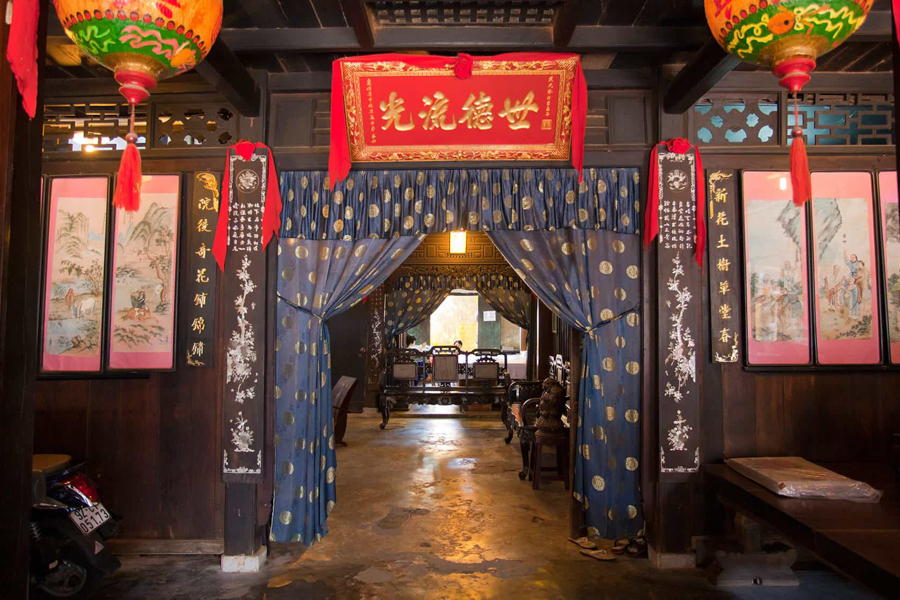
Located at number 4, Nguyen Thi Minh Khai street, Phung Hung Ancient House is also a very old house in Hoi An. Built in the 19 century, much later compared to other places in the town, it still bears a deeply traditional Hoi An style nevertheless.
The house is characterised for its roof which consists of many giant wood bars connected in a complicated way and so many corridors, reflecting the blend of Chinese-Japanese-Vietnamese architecture.
The house also shows a deep historical and cultural value for the fact that it was the place where rich and colorful lifestyle of merchants in Hoi An practised.
Phung Hung Ancient House was also a trading spot where valuable goods such as silk, salt, pepper were exchanged.
2.2. Chinese Assembly Halls
2.2.1. Teochew Assembly Hall
Teochew Assembly Hall, also known as Ong Bon temple, is always listed as a must-go for any tourist travelling to Hoi An.
This is also one of the oldest architecture in the town. It is unique with unbelievably spectacular carving, skillful wooden complex and lovely pottery painting, which really showcases the talent of Chinese migrants who came to Hoi An and greatly contributed to the amazing history of the town.
Teochew Assembly Hall is not only popular with Chinese descendents but also other residents of Hoi An. The temple acts as a religious and social location, which strengthens the bonds between the people of Hoi An.
2.2.2 Canton Assembly Hall
Constructed in 1885, this is one of the three Chinese Assembly Halls in Hoi An. The hall is magnificently beautiful thanks to the hormonal combination of strong white stone pillars with detailed and colorful wooden mosaics.
Inside the hall, there is a small lake with banks decorated with winding dragons, typical of traditional Chinese architecture.
Canton Assembly Hall also displays a collection of pottery and sculptures depicting the life of Cantonese migrants in Hoi An. This collection is one of the rarest and most well-preserved in Vietnam.
2.2.3. Hokkien Assembly Hall
Dated back from 1679, Hokkien Assembly Hall is one of the oldest and most popular tourist attractions in Hoi An. Although greatly damaged during the Vietnam War, the hall is becoming more and more spectacular with the efforts to recover its original look from descendents of Chinese migrants in Hoi An.
2.2.4. Tran family Temple
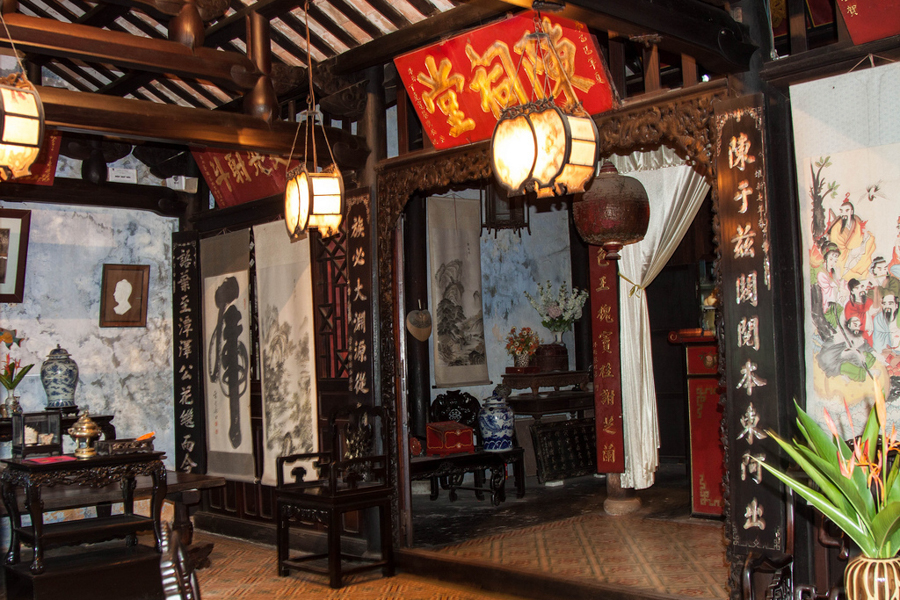
Located at 21 Le Loi, Tran family Temple is well-known throughout the region as one of the oldest in Hoi An. The owners of this place, the Tran family, is one of the first Vietnamese migrants to move to this area. They built the temple to worship their ancestors.
Looking from outside, the temple somewhat resembles a wooden normal house. But when you step inside, you would be amazed by the polished, lavish details that reflects the deep devotion from the descendents to their ancestors.
The altar has 3 main parts: The central one for the most important ancestors and two smaller sides in between for the male and female lineages.
2.3. Hoi An Market
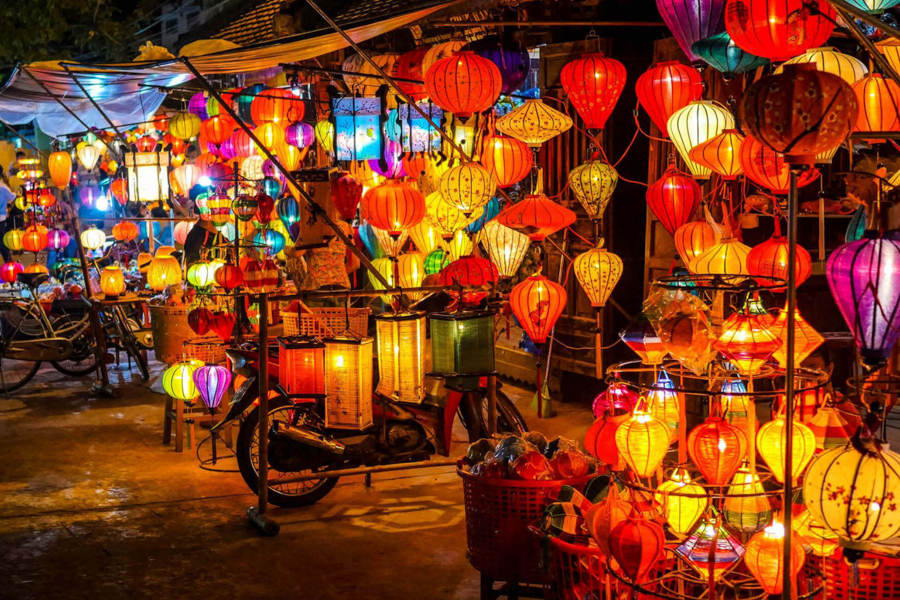
Among so many places in the town, Hoi An Market is one of the most popular. Although it is much smaller than Dong Xuan market in Hanoi or Ben Thanh market in HCMC, Hoi An market is unique with its typical yellowish color and regional specialties that can only be found in Hoi An.
Like any normal market, Hoi An is where the locals gather, sell what they produce and buy what they need. Getting closer to the market, you will notice a distinct smell of vegetables, fruits and fish and food lingering through the air.
You can find the freshest ingredients here. One thing that should never be forgotten is food. Hoi An Market sells many Hoi An traditional foods, including Banh Xeo, Cao Lau or Banh Bot Loc. You can also look for handicrafts as souvenirs for your trip here.
2.4. Hoi An Handicraft Studio
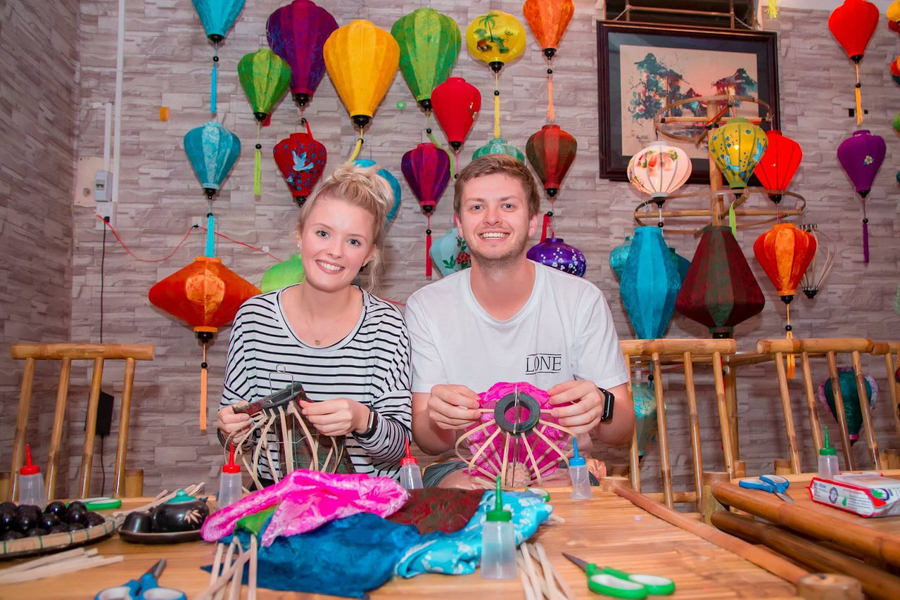
Hoi An Handicraft Studio is the place to preserve the art of making traditional handicrafts in the region.
This is the place where the most skillful artists of Hoi An and Quang Nam gather and perform the art of handicrafts right in front of tourists including pottery, weaving and lacquer.
Beside being able to witness the talent of artists and buy handicrafts as a souvenir, you also have the chance to try to make one for yourself.
2.5. Hoi An Japanese Bridge

Hoi An Japanese Bridge, also known as Chua Cau, is unarguably the most famous building in Hoi An.
In the early 17th century, Japanese migrants build the bridge to connect the Japanese area and the Chinese area of the port.
Therefore, the bridge is a sign of harmony, trust and co-existence. In 1653, a small pagoda dedicated to Lord Bac De Tran Vo - The guardian of the land was added, resulting in the name Chua Cau (meaning Bridge Pagoda in Vietnamese).
Hoi An Japanese Bridge not only reminds us of the glorious history of Hoi An but also emphasizes the harmony between various ethnics residing in the town which contributed to the wealth and prosperity the town once possessed.
2.6. Hoi An Museum of History and Culture
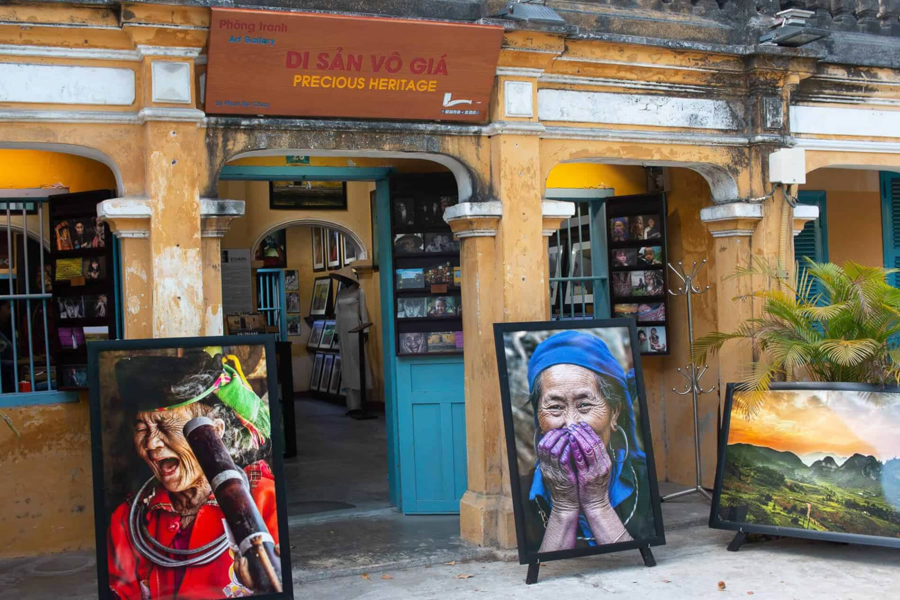
Located on Nguyen Hue street, Hoi An Museum of History and Culture is also a good place to grab some history of the land. The museum displays more than 400 different relics that are related to the foundation of Hoi An.
Walking around the place, you can see relics from earlier times, like the stone age period, Champa period, Dai Viet period and so on.
3. Beaches in Hoi An
3.1. Cua Dai Beach
With its crystal-clear seawater and pristine white sand, Cua Dai is a rising tourist attraction in Hoi An. You can submerge yourself into this paradise of nature.
Cua Dai has a variety of local specialties, including freshly caught seafood right in Cua Dai. Restaurants, hotels and tourist centers are also open to provide tourists with the best services.
3.2. An Bang Beach
Listed as one of 25 most beautiful beaches in Asia, An Bang Beach is also a must in you travel list.
The beach is long with pristine white sand and blue water. An Bang still preserves its peaceful atmosphere and original beauty.
A trip to An Bang would a great time to explore the beauty of nature and relax after days of stress and anxiety.
4. Nearby villages
4.1 Thanh Ha Pottery Village
In the Middle Ages, the pottery products from the village were exported to many countries around the world.
After years and years of war, the art of pottery still survives to this day and even becomes more vibrant. Coming to Thanh Ha, you would be able to witness the artists perform the art of pottery. Also, you can even directly create your own pottery here.
4.2. Tra Que Vegetable Village

Located 4 km off the center of Hoi An, The vegetable village of Tra Que is also very popular among tourists.
The village specializes in growing vegetables including common ones like water morning glory plants and lettuce. You can also find other Vietnamese herbs that go well with traditional food like mint, coriander and basil at this place.
Traveling to Hoi An, Vietnam you will certainly have memorable experiences. To make sure that you have a perfect trip here, I suggest you should take part in things to do in Hoi An as I before such as wandering around Hoi An, joining Hoi An Cycling tour, tasting traditional and unique food, sitting on a Boat on Hoai River … In addition, there are many attractions for you to discover and take photos.
- If you like historical sites, you should drop by Hoi An Ancient houses
- If you like swimming, sunbathing, Cua Dai Beach and An Bang beach are two beaches in Hoi An for you.
- If you like becoming a farmer, you can come to any nearby villages.
Useful travel blogs
About A21 Tours
As a pioneering e-commerce travel agency in Vietnam, now expanding into Laos and Cambodia, A21 Tours proudly offers over 5,000 unique travel products across Vietnam, Laos and Indochina.
Explore A21 Tours